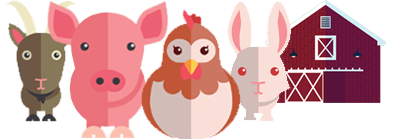Applying guidelines for Animal Assisted Interventions (AAI) in practice is not always easy. Various factors, such as the financial aspect, internal regulations, support from management, staff motivation, the existing infrastructure, the type of patients, the animals’ health, etc. can make following the guidelines difficult. With these guidelines, we hope to create a basis for starting a project that comes as close to the ideal situation as possible. Once the project is up and running, the guidelines can be used as a support for ongoing evaluation and determining where, if necessary, modifications can be made.
Combining interdisciplinary forces is necessary to start up an AAI project. Various actors must be invited to a meeting discussing these guidelines. According to experience, education, interest and the role each would like to play, the guidelines can be progressively allocated. For this reason, the guidelines have been categorised per subject. All guidelines are formulated so that they are applicable for both Animal Assisted Activities (AAA) and Animal Assisted Therapy (AAT) in diverse care environments. When relevant, a number of additional guidelines for specific situations, such as AAI in hospitals, are added.
The guidelines begin with recommendations for AAI with dogs because they are used most often in AAI. For the sake of the dog’s welfare, it is not recommended that the dog lives in the care facility on a permanent basis. These guidelines have therefore been designed for dogs visiting the facility or semi-residential dog (go home with their owner).
Because cats, with a few exceptions, become very stressed during transport and have difficulty adapting to new environments, we recommend that cats live as permanent residents in the care facility. The guidelines for cats are thus designed for cats living permanently in a care facility.
Other animals can also be used in AAI such as petting zoo animals. Guidelines for these animals are designed per species but grouped per subject.
Good luck!
You can find the guidelines per subject by clicking the animals below.



